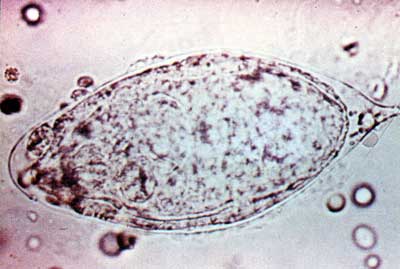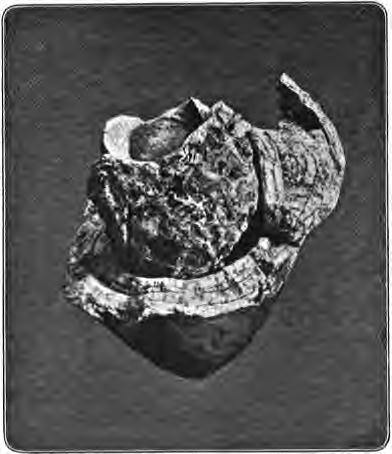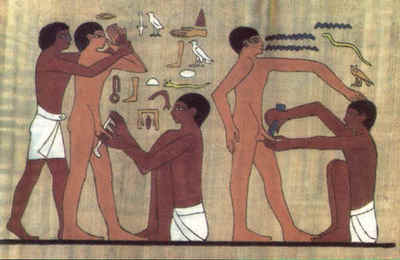Virtual Museum
Time Corridor
Bilharzia & stones
Evidence of medical practice in ancient Egypt comes from ten extant medical papyri: the Ebers, the Edwin Smith, the Berlin, the London, the Hearst, the Kahun, the Chester Beaty, the Carlsberg, the Zoega and the Ramasseum papyri. Further evidence comes from images of Egyptian life depicted in carvings and statues.
It appears that there were three types of medical practitioners: physicians, priests and wizards. According to Herodotus, there was also medical specialisation, with separate doctors for different diseases or body parts, such as eyes, head, etc.

Bilharzia
Infection with Schistosoma haematobium (pictured, upper right) remains endemic in Egypt today and is highly likely to have been present in Ancient times. Some even believe that it was represented as one of the Biblical plagues.
Haematuria (probably the result of schistosomal infestation) is mentioned many times in the papyri. In the Ebers papyrus, there may even be a direct reference to a parasitic cause.
Schistosoma haematobium was first desribed by Theodore Bilharz (1825 - 1862).

Bladder Stones
The Egyptologist, Elliot Smith, examined 9000 mummies but found only two bladder stones. It is likely that stone disease was very common in Egypt but less so in the wealthy, whose bodies were mummified. The oldest stone found was in the remains of the pelvic bones of a teenage boy buried around 4800 BC. No evidence survives of surgical treatment for bladder stones in Ancient Egypt.
The calculus (pictured, middle right) was presented to the Royal College of Surgeons by Elliot Smith, and analysed and described by Shattock in 1905; it was a pure uric acid stone. It is likely that the boy was a hunter gatherer and had a diet high in protein. Sadly, the stone was destroyed when the Hunterian Museum was damaged by enemy action in 1941.

Circumcision
Circumcision is amongst the "oldest" operations recorded.
A bas-relief (pictured, lower right) from the temple of Ankha-ma-Hor in Saqqara clearly shows adult circumcisions being performed. This was probably carried out for ritual or religious reasons.
Read more about circumcision and the Temple of Ankha-ma-Hor.
← Back to Time Corridor